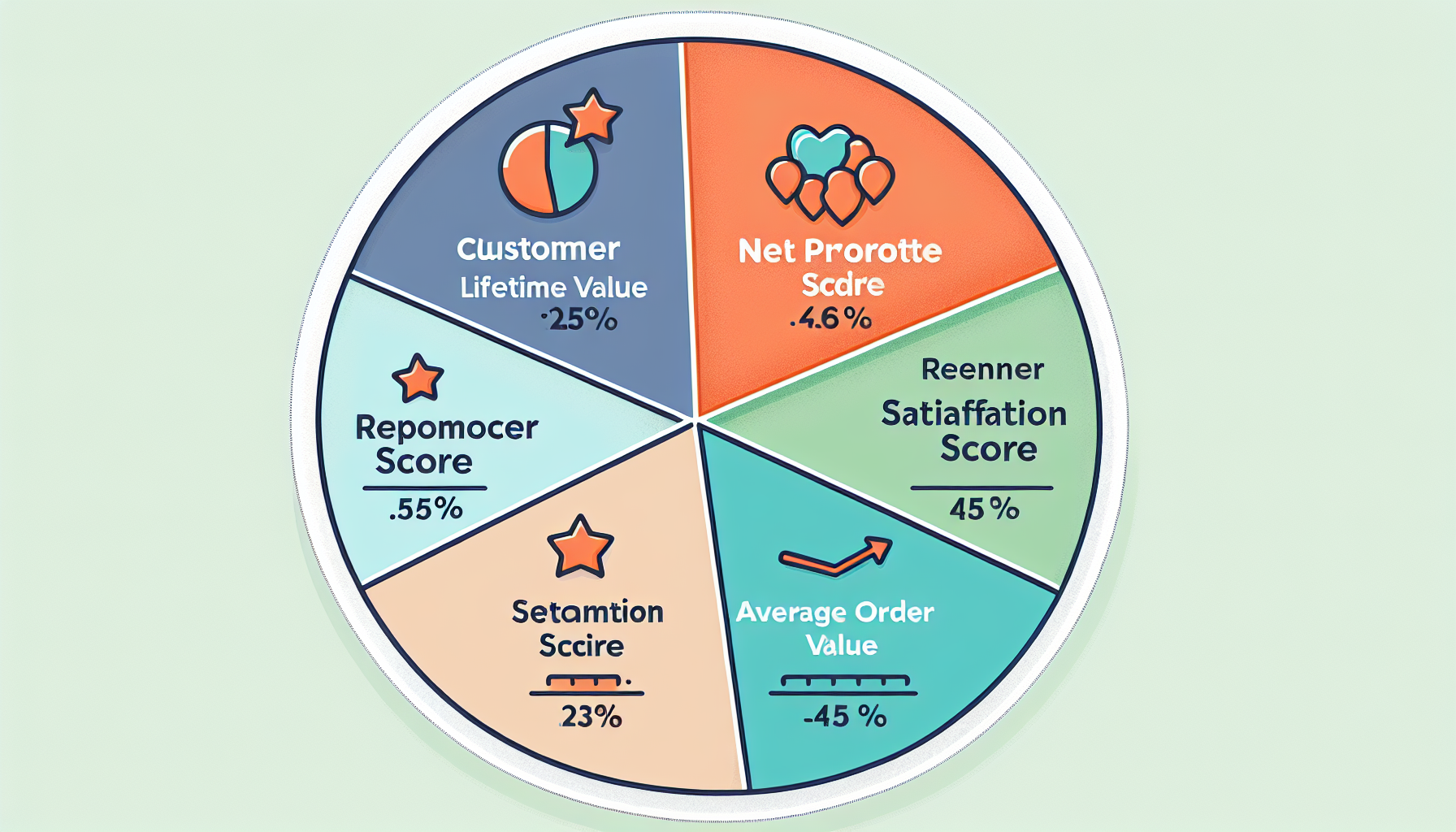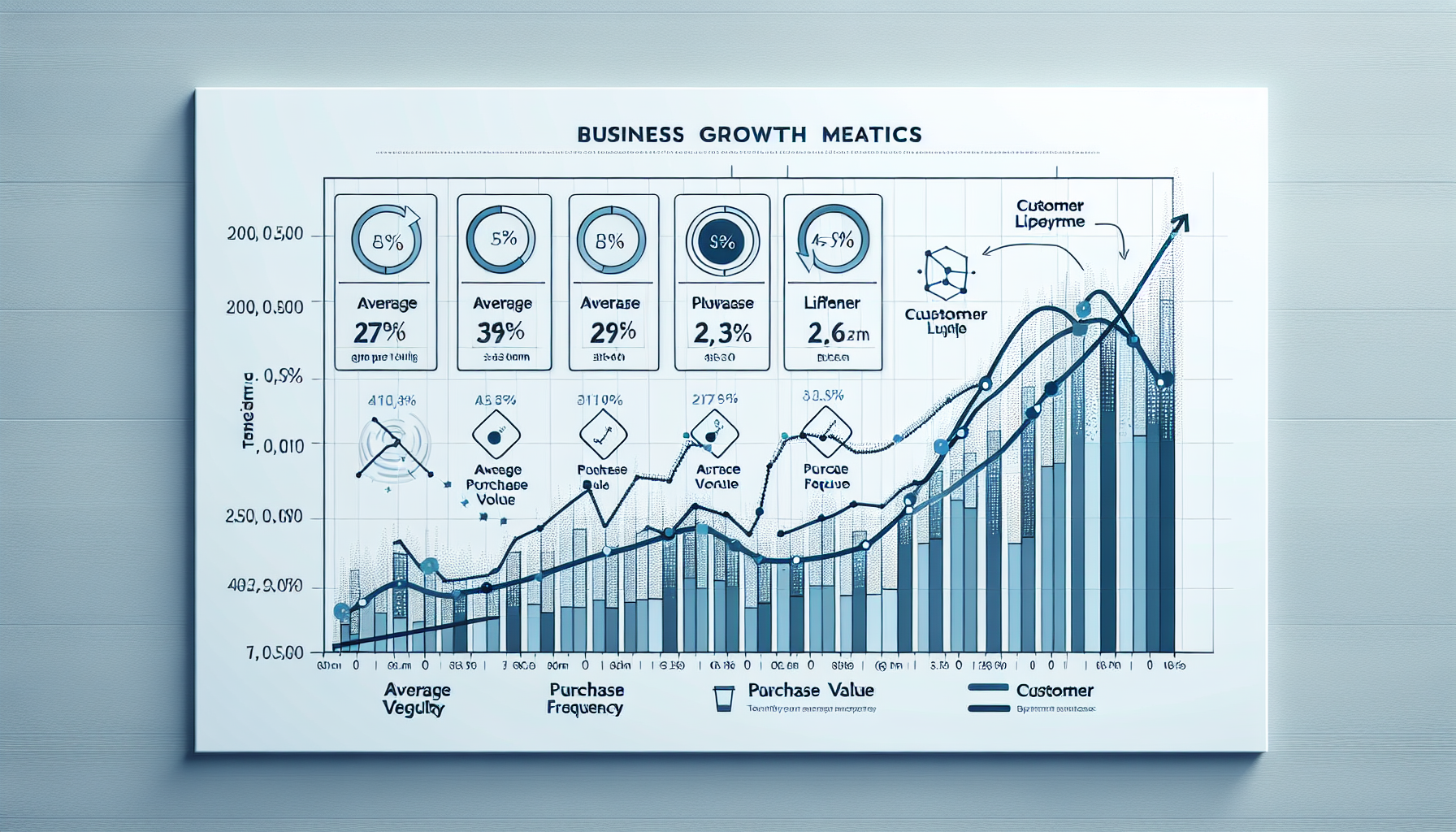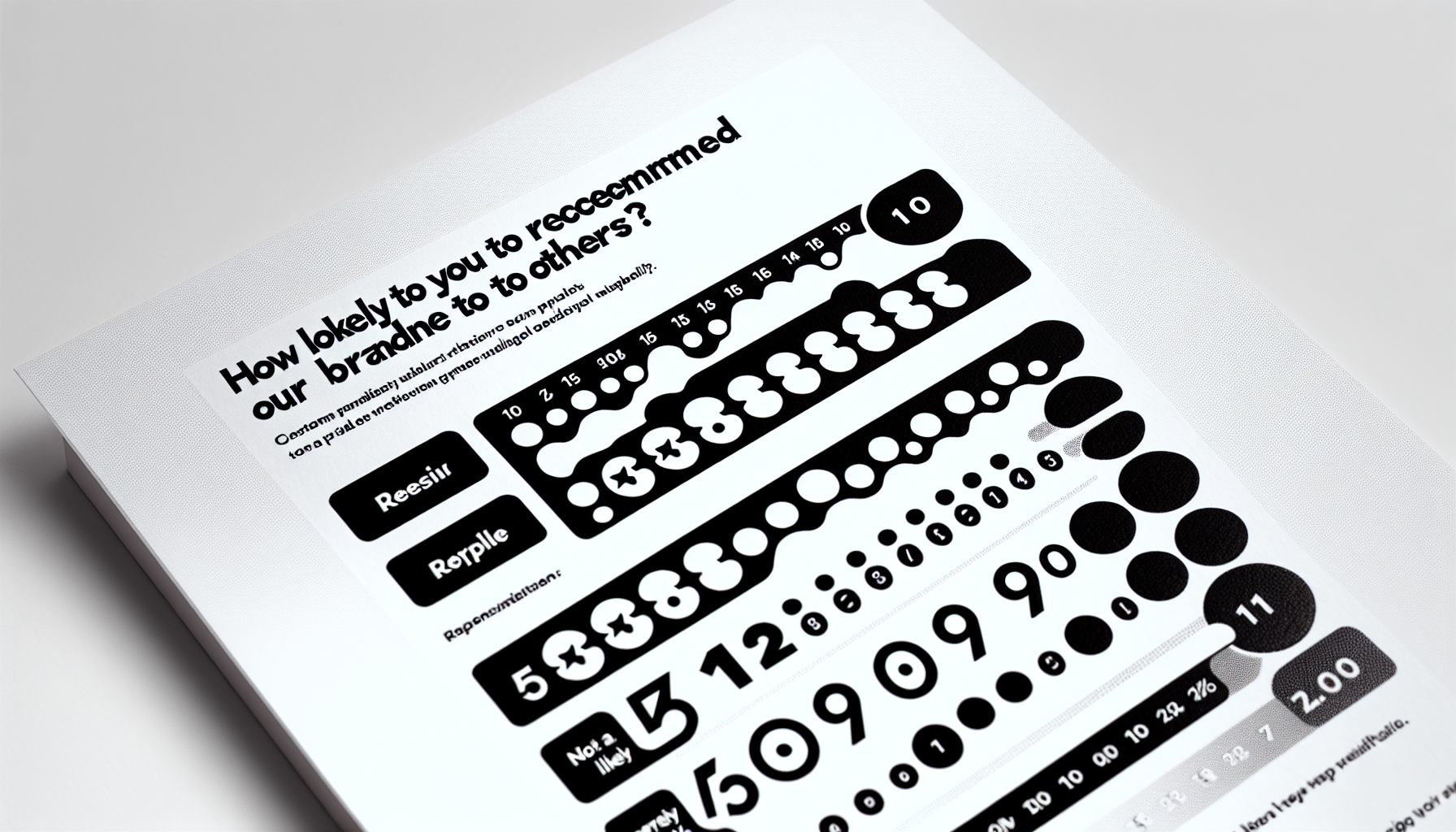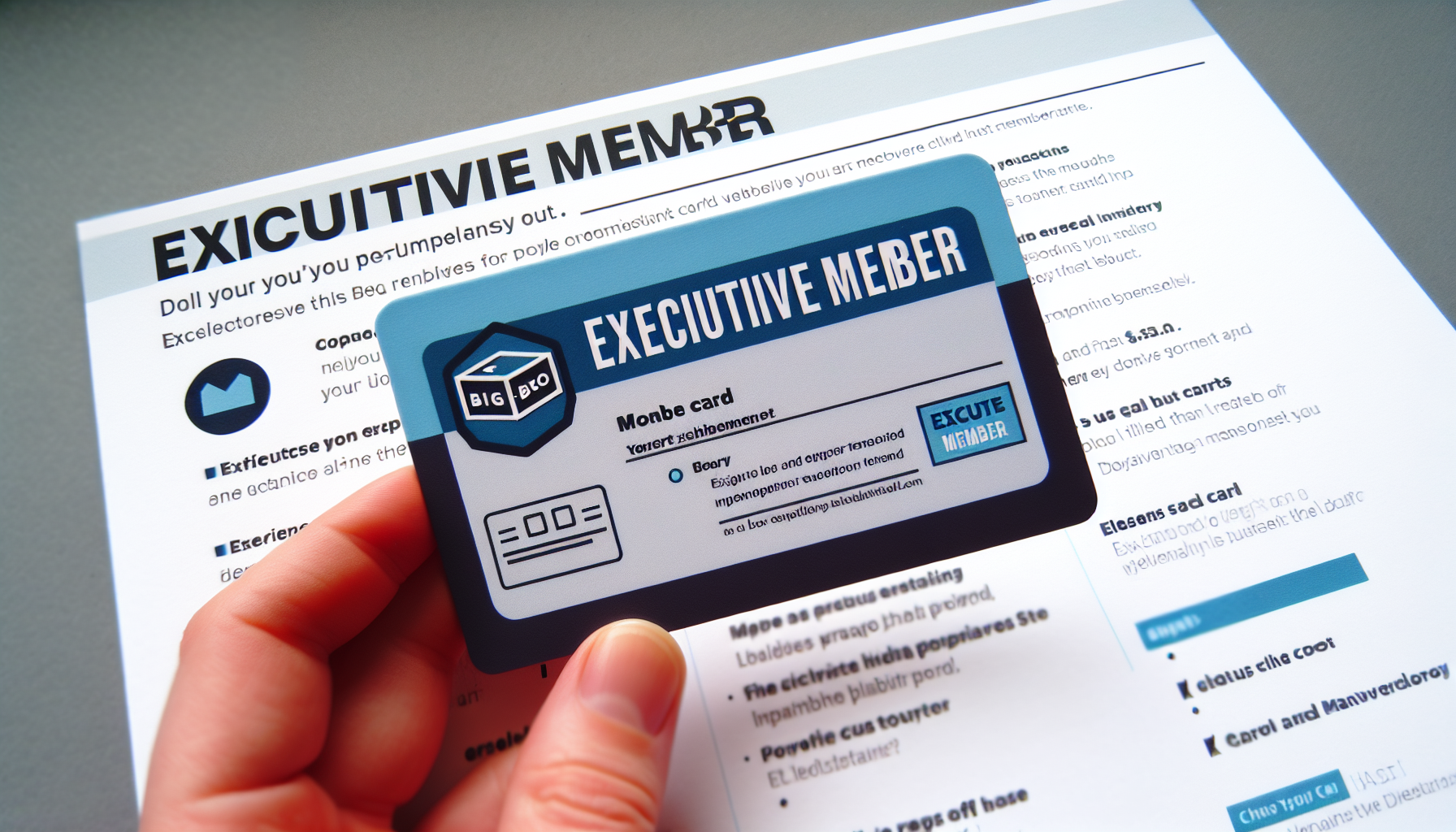Measuring Consumer Satisfaction and Loyalty: 5 Key Metrics You Should Keep an Eye On
Customer loyalty is the deep-rooted commitment a customer has towards a brand or business, often resulting in repeat purchases and positive word-of-mouth. Measuring customer loyalty is crucial for businesses aiming to sustain long-term success. It provides insights into customer satisfaction and helps in understanding how well a brand resonates with its audience.

The importance of customer loyalty cannot be overstated. Loyal customers are more likely to make repeat purchases, recommend the brand to others, and provide valuable feedback, all of which contribute to increased revenue and sustainable growth. By measuring brand loyalty, businesses can identify strengths and areas needing improvement, ensuring that their strategies align with customer expectations.
Key metrics to be discussed include:
- Customer Lifetime Value (CLV)
- Net Promoter Score (NPS)
- Repeat Purchase Rate (RPR)
- Customer Satisfaction Score (CSAT)
- Average Order Value (AOV)
These metrics offer a comprehensive view of customer loyalty, aiding businesses in crafting targeted marketing strategies and enhancing overall customer experience.
However, maintaining customer loyalty also involves ensuring a seamless experience while interacting with your brand online. This includes having clear privacy policies, providing an easy terms of service, and offering straightforward processes for intake submission which can significantly influence a customer's perception of your brand.
Understanding Customer Loyalty

What Constitutes Customer Loyalty
Customer loyalty represents a customer's unwavering commitment to a brand, resulting in repeat purchases and positive word-of-mouth. Loyal customers consistently choose your products or services over competitors, even when faced with alternatives. The Lealtad App helps businesses identify and nurture these loyal customers through its sophisticated tracking and analytics features.
The Role of Loyal Customers in Business Growth
Loyal customers are often the backbone of any thriving business:
- Increased Revenue: Repeat customers tend to spend more over time compared to new customers.
- Lower Marketing Costs: Acquiring new customers is costlier than retaining existing ones. Loyal customers reduce the need for constant acquisition efforts.
- Brand Advocacy: Satisfied loyal customers are likely to recommend your brand, acting as invaluable advocates.
Using the Lealtad App, businesses can easily segment loyal customers and tailor marketing campaigns to maximize their impact, enhancing overall growth.
Strategies to Boost Customer Loyalty and Retention
Implementing effective strategies can significantly improve customer loyalty and retention. Here are some actionable tactics from the Lealtad App:
- Personalized Communication:
- Use customer data to tailor messages, offers, and recommendations.
- Leverage the Lealtad App's advanced analytics to create highly personalized experiences that resonate with individual preferences.
- Reward Programs:
- Introduce loyalty points, discounts, or exclusive benefits for repeat purchases.
- Configure a customized rewards program effortlessly with the Lealtad App, ensuring it aligns with your business goals and customer expectations.
- Exceptional Customer Service:
- Provide prompt and effective support across all touchpoints.
- Utilize feedback collected through the Lealtad App’s integrated survey tools to continually improve service quality.
- Engagement Initiatives:
- Foster community through social media interactions, newsletters, and engagement campaigns.
- Track engagement metrics within the Lealtad App to gauge campaign effectiveness and customer involvement.
- Feedback Mechanisms:
- Actively seek out customer opinions and act on them.
- Deploy surveys via the Lealtad App to gather actionable insights into customer satisfaction and areas for improvement.
By focusing on these strategies, businesses not only boost loyalty but also create long-term relationships that drive sustained success.
Key Metrics for Measuring Customer Loyalty

1. Customer Lifetime Value (CLV)

Customer Lifetime Value (CLV) is a crucial metric that provides deep insights into the financial value a customer brings to a business over the entirety of their relationship. By understanding CLV, businesses can tailor their marketing strategies, allocate resources more effectively, and foster stronger customer relationships.
Explanation of CLV and Its Relevance in Understanding Customer Loyalty Metrics
CLV estimates the total revenue that a business can expect from a single customer account throughout their relationship. This metric is indispensable for several reasons:
- Financial Forecasting: CLV helps businesses predict future revenue streams based on past customer behavior.
- Resource Allocation: By knowing which customers are most valuable, businesses can allocate resources more effectively.
- Strategic Decision-Making: Understanding CLV informs decisions regarding customer acquisition costs and retention efforts.
Methods for Calculating CLV
Calculating CLV involves both historical purchase data and predictive modeling techniques. Here’s how businesses can quickly and easily leverage this feature using the highly customizable Lealtad App:
- Historical Purchase Data
- Collect data on past purchases, including frequency, recency, and monetary value.
- Use Lealtad App’s built-in analytics tools to aggregate and analyze this data seamlessly.
- Utilize machine learning algorithms within the Lealtad App to predict future purchasing behaviors based on historical data.
- Adjust models dynamically as new data comes in to keep predictions accurate.
- Formula-Based Calculation
- Basic Formula: [ \text{CLV} = (\text{Average Purchase Value} \times \text{Purchase Frequency}) \times \text{Customer Lifespan} ]
- Implement this formula directly into your analytics dashboard within the Lealtad App for real-time calculation.
How CLV Influences Marketing and Retention Strategies
Understanding CLV allows businesses to fine-tune their marketing and retention strategies in several impactful ways:
- Targeted Promotions:
- High-CLV customers can be targeted with exclusive promotions or loyalty rewards through the Lealtad App’s personalized communication features.
- Personalized Communications:
- Tailor messages based on individual customer preferences and behaviors tracked within the app.
- Send automated, personalized emails or SMS campaigns using Lealtad's communication tools.
- Optimized Budgeting:
- Allocate marketing budgets more efficiently by focusing on high-CLV segments.
- Utilize Lealtad App’s budgeting features to track spend versus return on investment (ROI) for different customer segments.
Example Use Case
Consider an e-commerce business that uses the Lealtad App to track its high-value customers. By analyzing purchase history and applying predictive models, they identify a segment of customers with high CLVs. The business then uses targeted promotions via email campaigns tailored specifically for these customers, leading to increased repeat purchases and higher overall revenue.
By incorporating these strategies, businesses not only enhance their understanding of customer loyalty but also create tailored experiences that drive long-term engagement and satisfaction.
2. Net Promoter Score (NPS)

Net Promoter Score (NPS) is a simple yet powerful tool for measuring customer loyalty and satisfaction. It involves asking customers one question:
"How likely are you to recommend our brand to others?"
Customers respond on a scale from 0 to 10, and based on their answers, they are grouped into three categories:
- Promoters (9-10): Highly satisfied customers who are likely to recommend the brand.
- Passives (7-8): Satisfied but not overly enthusiastic customers who might switch to competitors.
- Detractors (0-6): Unhappy customers who could potentially harm the brand through negative word-of-mouth.
To calculate NPS, you subtract the percentage of Detractors from the percentage of Promoters.
Why NPS Matters
- Measuring Customer Satisfaction: A high NPS score indicates that your customers are happy and loyal, which is crucial for growing your business.
- Predicting Customer Behavior: A high NPS often means that fewer customers will leave and more will stay with your brand. It also adds to other metrics like Customer Lifetime Value (CLV) by giving you qualitative insights.
Understanding NPS Results
Knowing how your customers feel about your brand can help you take action:
- Promoters can be used as advocates for your brand through referral programs or testimonials.
- Passives need strategies to engage them and turn them into Promoters.
- Detractors need immediate attention to fix their problems and improve their overall experience.
With the highly customizable Lealtad App, businesses can easily set up NPS surveys and track responses in real time. The app's user-friendly dashboard makes it simple to segment respondents, allowing for targeted follow-ups and personalized interactions. This ensures that strategies are tailored to each customer segment, leading to higher retention rates and improved overall customer loyalty.
3. Repeat Purchase Rate (RPR)

Understanding customer loyalty involves diving into various metrics, and Repeat Purchase Rate (RPR) is a vital one. RPR measures the percentage of customers who return to make additional purchases over time, highlighting patterns in customer behavior and loyalty.
What RPR Indicates About Customer Behavior Patterns Over Time
- Customer Retention Rate: High retention rates often correlate with a high RPR, indicating that customers are satisfied with their initial experience and choose to come back.
- Customer Lifetime Value (CLV): Analyzing RPR helps in estimating CLV, as frequent repeat purchases can significantly boost the lifetime value of a customer.
- Churn: Low RPR could signal potential churn issues, helping businesses identify and address underlying problems before they escalate.
Steps to Track Repeat Purchases Effectively
Tracking repeat purchases involves leveraging data efficiently. Here’s how you can do it using Lealtad App:
- Order History Data: Utilize historical purchase data to identify repeat customers. Lealtad App can aggregate this data seamlessly.
- Unique Customer Identifiers: Assign unique identifiers to each customer to track their purchase history accurately. Lealtad App allows easy integration of unique identifiers into your system.
- Analytics Dashboard: Use Lealtad App’s intuitive dashboard to monitor and analyze repeat purchase patterns over customizable periods.
Strategies to Improve RPR
Enhancing your Repeat Purchase Rate requires targeted strategies:
- Subscription Models: Implement subscription services that encourage regular purchases. With Lealtad App, you can set up and manage subscriptions effortlessly.
- Exclusive Member Benefits: Offer perks such as early access to sales or exclusive discounts for repeat customers. Customize these offers through the flexible reward system provided by Lealtad App.
- Targeted Promotions: Send personalized promotions based on previous purchase behaviors using Lealtad App’s advanced segmentation features.
By focusing on these key aspects, businesses can leverage the Repeat Purchase Rate to foster deeper customer loyalty and drive sustained growth.
4. Customer Satisfaction Score (CSAT)

Customer Satisfaction Score (CSAT) is a crucial metric for measuring how satisfied customers are immediately after an interaction. It provides valuable insights into how customers view their experiences with your products or services.
Definition and Importance
- Definition: CSAT measures customer satisfaction right after an interaction, usually using a simple scale (e.g., 1-5 or 1-10).
- Importance: High CSAT scores often indicate strong customer retention rates, lower churn, and increased Customer Lifetime Value (CLV). This makes it an essential metric for understanding consumer satisfaction and loyalty.
Conducting Effective Surveys
To measure CSAT effectively, surveys should be strategically deployed across various touchpoints:
- Post-Purchase Surveys: Immediately after a transaction to assess the buying experience.
- Customer Support Follow-ups: Right after resolving a service ticket to gauge support quality.
- Product Usage Feedback: Periodically to understand long-term satisfaction with products.
Using the highly customizable Lealtad App, business owners can quickly set up these surveys at crucial stages of the customer journey. The app allows you to:
- Create tailored survey questions.
- Schedule automatic survey dispatches based on customer interactions.
- Analyze real-time responses through intuitive dashboards.
Utilizing CSAT Data
Leveraging CSAT data involves more than just tracking scores:
- Identify Pain Points: Use low scores to pinpoint areas needing improvement.
- Enhance Customer Experience: Implement changes based on feedback to elevate overall service quality.
- Personalized Engagements: High CSAT scores can trigger personalized thank-you messages or exclusive offers, reinforcing positive experiences.
By integrating these practices into your strategy, businesses can significantly enhance customer experience quality. The Lealtad App helps streamline this process through its comprehensive analytics and automation features, enabling swift action based on real-time insights.
5. Average Order Value (AOV)

Average Order Value (AOV) is a crucial metric for understanding customer purchasing behavior and the effectiveness of marketing strategies. By examining AOV, businesses can gauge how much revenue is generated from an average transaction, providing insights into customer spending patterns.
Tracking AOV over time offers valuable insights into customer loyalty. An increase in AOV often indicates that customers are making larger purchases, which correlates with repeat buying behavior and enhanced brand affinity. Consistently high AOV suggests that customers find value in the products or services offered, reinforcing their loyalty.
Improving AOV involves several strategies:
- Upselling: Encouraging customers to purchase higher-end products or add-ons.
- Cross-selling: Suggesting complementary products to enhance the primary purchase.
- Loyalty Incentives: Offering discounts, free shipping, or exclusive access to members who reach certain purchase thresholds.
These approaches not only boost immediate sales but also contribute to long-term customer retention. The Lealtad App makes it easy for business owners to leverage these techniques by:
- Providing detailed analytics on individual customer transactions to identify upselling and cross-selling opportunities.
- Customizing loyalty programs that offer targeted rewards based on AOV metrics.
- Automating personalized promotions that encourage higher spending per visit.
By focusing on AOV, businesses can create a more engaging and rewarding experience for their customers, ultimately driving higher retention rates and reducing churn.
Other Relevant Metrics in Customer Loyalty Measurement
Churn Rate Metrics
Understanding the churn rate is crucial for identifying potential issues and improving customer retention strategies. Churn rate refers to the percentage of customers who stop doing business with a brand within a specific timeframe.
Definition and Calculation Methods
Churn rate can be calculated using the following formula:
Churn Rate = (Number of Customers Lost During a Period / Number of Customers at the Start of the Period) x 100
For instance, if a business starts with 1,000 customers at the beginning of the month and loses 50 customers by the end, the churn rate would be:
Churn Rate = (50 / 1,000) x 100 = 5%
This metric helps businesses understand how many customers are leaving and provides insights into retention performance over time.
Identifying Reasons Behind Churn
Identifying why customers leave requires a combination of qualitative and quantitative research methods.
- Qualitative Research: Conduct exit interviews or surveys to gather direct feedback from customers about their reasons for leaving. This approach provides detailed insights into customer dissatisfaction.
- Quantitative Analysis: Utilize techniques like cohort studies to analyze patterns among different customer segments. For example:
- Track when and why specific cohorts (groups of customers acquired during the same period) started churning.
- Analyze transaction data to identify common characteristics among those who churned.
Using these methods, businesses can pinpoint pain points in the customer journey and address them effectively.
Leveraging Lealtad App for Churn Analysis
With Lealtad App, business owners can easily track churn rates through its customizable dashboard. The app allows you to:
- Set up automated reports to monitor churn rates over specified periods such as monthly or quarterly.
- Segment customer data to identify at-risk groups based on their engagement levels and purchase history.
- Implement targeted retention campaigns directly from the platform, leveraging insights gained from churn analysis.
By integrating these functionalities, Lealtad App ensures that you stay ahead in retaining your valuable customers.
Loyalty Program Engagement Metrics

Measuring how customers engage with loyalty programs provides critical insights into the emotional connection they have with a brand. Engagement metrics help assess not only participation levels but also the overall impact of loyalty initiatives on customer behavior and sentiment.
Customer Effort Score (CES) is an important indicator of how easy or difficult it is for customers to interact with a brand's products or services throughout various lifecycle phases. Collecting CES feedback can be achieved through:
- Targeted Surveys: Short surveys sent after specific interactions, like purchases or customer service inquiries.
- Usability Testing Sessions: Observing customers as they navigate and use products or services.
By understanding CES, businesses can identify friction points and streamline experiences to foster deeper loyalty.
Active Engagement Rate and Participation Rate are other key metrics. Monitoring these metrics helps in evaluating how effectively a loyalty program captivates its audience:
- Active Engagement Rate: Tracks active participation over defined periods. For instance, analyzing how often members log into their accounts or redeem rewards.
- Participation Rate: Measures involvement during promotional campaigns aimed at loyal customer segments. This could include tracking sign-ups for members-only sales or participation in gamified activities.
Using the Lealtad App, businesses can effortlessly track these engagement metrics. The app's customizable dashboard allows for real-time monitoring of CES results, engagement rates, and campaign participation, enabling business owners to quickly adapt strategies to maximize customer satisfaction and loyalty.
Successful Case Studies: Exploring Examples Of Successful Loyalty Programs
Starbucks Rewards

Starbucks Rewards is a shining example of a successful loyalty program. By integrating their loyalty program with the Starbucks app, they have created a seamless and engaging customer experience. Members earn stars for every purchase, which can be redeemed for free items.
Key features include:
- Personalized Offers: Tailored promotions based on purchase history.
- Mobile Ordering: Convenience of ordering ahead via the app, reducing wait times.
- Exclusive Benefits: Free birthday drinks and member events.
This approach has led to significant increases in repeat purchases and higher average transaction values. Businesses can leverage the highly customizable Lealtad App to design similar personalized promotions and integrate them within their mobile platforms.
Costco Executive Membership

Costco’s Executive Membership is another great example. For a slightly higher annual fee, members receive an additional 2% reward on eligible Costco purchases, along with other exclusive benefits.
Key aspects include:
- Enhanced Value Proposition: The promise of earning back more than the membership fee in rewards.
- Exclusive Savings: Special discounts on various services such as travel and insurance.
- Loyalty Reinforcement: The tiered membership structure encourages upgrades and deeper engagement.
This model not only boosts customer retention but also drives higher spending among loyal customers. Utilizing the Lealtad App, businesses can easily implement tiered reward systems that offer escalating benefits, incentivizing customers to engage more actively.
Lessons Learned
From these successful case studies, several lessons emerge:
- Personalization Matters: Tailoring rewards and communications to individual preferences can significantly enhance engagement.
- Convenience Is Key: Integrating loyalty programs with mobile solutions improves user experience and satisfaction.
- Exclusivity Drives Loyalty: Offering unique benefits or exclusive savings creates a stronger emotional connection to the brand.
Using the Lealtad App, businesses can quickly implement these strategies by customizing their loyalty programs to fit specific needs, ensuring that both convenience and exclusivity are prioritized.
Implementing A Comprehensive Measurement Strategy For Tracking Loyalty Metrics Effectively
Establishing a comprehensive measurement strategy is essential for tracking loyalty metrics effectively. This involves a systematic approach to capturing both qualitative and quantitative data points that illuminate the dynamics of customer loyalty. Here’s a step-by-step guide to help organizations develop a robust framework:
1. Define Objectives
- Clearly outline what you aim to achieve by tracking loyalty metrics.
- Identify key performance indicators (KPIs) that align with your business goals, such as Customer Lifetime Value (CLV), Net Promoter Score (NPS), and Repeat Purchase Rate (RPR).
2. Select Relevant Metrics
- Choose the most pertinent metrics based on your objectives.
- For instance, if improving customer retention is a priority, focus on metrics like CLV and churn rate.
3. Utilize Advanced Tools
- Leverage digital tools and software like the Lealtad App to collect and analyze data efficiently.
- The Lealtad App offers customizable dashboards where you can track various metrics in real-time, making it easier to identify trends and patterns.
4. Integrate Data Sources
- Combine data from multiple touchpoints such as sales transactions, customer feedback surveys, and social media interactions.
- Use the Lealtad App’s integration capabilities to sync data from different platforms seamlessly.
5. Design Surveys and Feedback Mechanisms
- Create surveys to measure Customer Satisfaction Score (CSAT) and NPS.
- The Lealtad App allows you to design personalized surveys that capture immediate post-interaction satisfaction levels.
6. Implement Predictive Analytics
- Utilize historical purchase data and predictive modeling techniques to calculate CLV.
- The Lealtad App enables businesses to generate predictive analytics reports, helping in formulating targeted marketing strategies.
7. Monitor and Review Metrics Regularly
- Set up regular intervals for reviewing collected data.
- Use the Lealtad App’s automated reporting features to receive timely updates on key metrics.
8. Adjust Strategies Based on Insights
- Analyze the data to derive actionable insights.
- Adapt your marketing and retention strategies accordingly—whether it’s launching targeted promotions or enhancing customer service protocols.
9. Engage Your Team
- Ensure that all relevant departments are aligned with the measurement strategy.
- Share insights through the Lealtad App’s collaborative tools, fostering a unified approach towards enhancing customer loyalty.
10. Continuously Improve
- Regularly update your measurement strategy based on new insights and changing market conditions.
- The highly customizable nature of the Lealtad App allows for continual adjustments to refine your approach over time.
Implementing these steps will help create a holistic framework for tracking loyalty metrics effectively, enabling businesses to foster enduring bonds with their customers over extended periods.
Next Steps to Boost Customer Satisfaction and Loyalty In your Business

The importance of measuring customer loyalty cannot be overstated. Businesses committed to nurturing loyal clientele bases must consistently engage in continuous improvement efforts. These efforts should be informed by insights gained through systematic monitoring practices discussed earlier, alongside strategic adjustments based on shifting market dynamics observed during the analysis phase.
Key Takeaways:
- Ongoing Commitment: Maintain a steadfast commitment to nurturing customer loyalty by leveraging data-driven insights.
- Systematic Monitoring: Regularly apply the metrics described to ensure you capture both qualitative and quantitative aspects of customer loyalty.
- Strategic Adjustments: Be prepared to make necessary adjustments based on the dynamic nature of the market.
Are you a business owner looking for easy and affordable ways to generate more customers? With the help of Lealtad App, you can book a complimentary strategy demo session and sign up for an account. This platform allows you to build and launch your own custom-branded digital loyalty program in less than 10 minutes, which can potentially boost your business sales and revenue by 25% or more!
"Unlock the full potential of your business by fostering enduring relationships with your customers through effective loyalty measurement and engagement strategies."
For more insights on how to effectively measure customer loyalty and engage with your clientele, visit the Lealtad App blog.
